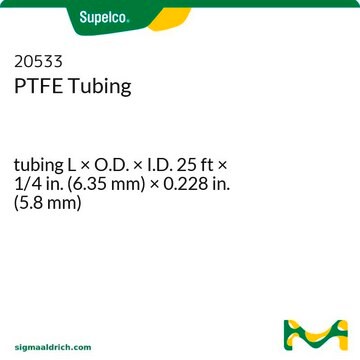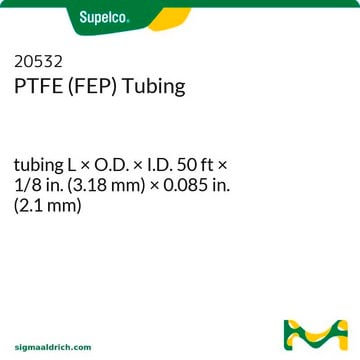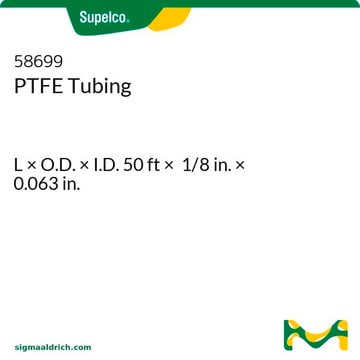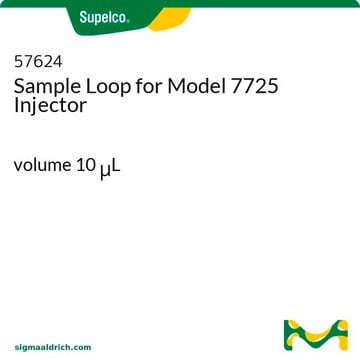22633
Sample Loop for Gas Sampling
loop volume 0.5 mL, 1/8 in. fitting, number of ports, 6
Synonym(s):
SAMPLE LOOP 0.5CC 6 PORTFOR 1/8 VALVE
Sign Into View Organizational & Contract Pricing
All Photos(1)
About This Item
UNSPSC Code:
41115700
eCl@ss:
32060101
Recommended Products
feature
number of ports 6
manufacturer/tradename
SL500P
VICI Valco®
loop volume
0.5 mL
fitting
1/8 in. fitting
Looking for similar products? Visit Product Comparison Guide
General description
In loop systems, sample vials are pressurized after equilibrium by carrier gas. Nevertheless, the vial opens temporarily towards the sample loop of a gas sampling valve and not to the column. The pressurized headspace gas from vial fills up the sample loop from which it is injected to the GC.
Application
Sample loops may be used in GC system consisting headspace samplers for the gas analysis to determine the impact of biochar on CO2 and N2O production. It may also be used to analyse hydrocarbons in expired air using GC equipped with FID.
Legal Information
Valco is a registered trademark of Valco Instruments Co. Inc.
Choose from one of the most recent versions:
Certificates of Analysis (COA)
Lot/Batch Number
Sorry, we don't have COAs for this product available online at this time.
If you need assistance, please contact Customer Support.
Already Own This Product?
Find documentation for the products that you have recently purchased in the Document Library.
S Mendis et al.
Clinical chemistry, 40(8), 1485-1488 (1994-08-01)
Both pentane and isoprene are excreted in human breath. Although pentane is considered an index of lipid peroxidation, the significance of isoprene is unknown. Having a similar boiling point, these two hydrocarbons are difficult to separate by gas chromatography. We
Bruno Kolb, Leslie S. Ettre.
Static Headspace-Gas Chromatography: Theory and Practice, 83-83 (2006)
K A Spokas et al.
Chemosphere, 77(4), 574-581 (2009-08-04)
A potential abatement to increasing levels of carbon dioxide (CO(2)) in the atmosphere is the use of pyrolysis to convert vegetative biomass into a more stable form of carbon (biochar) that could then be applied to the soil. However, the
Our team of scientists has experience in all areas of research including Life Science, Material Science, Chemical Synthesis, Chromatography, Analytical and many others.
Contact Technical Service







